The Contribution of Ecosystem Regulating Services Based on Their Interrelationship in the Urban Ecosystem
Abstract
:1. Introduction
2. Materials and Methods
2.1. Selection of Assessment Indices and Methods
2.2. Classification of Urban Spaces
2.3. Assessment of the ERS
2.4. Analysis of Relative Contribution of Urban ERS
3. Results
3.1. Results of Classification
3.2. Assessment Results of ERS
3.3. Results of Relative Contribution Analysis
4. Discussion
5. Conclusions
Author Contributions
Funding
Institutional Review Board Statement
Informed Consent Statement
Data Availability Statement
Acknowledgments
Conflicts of Interest
Appendix A
| x-axis: NDVI–y-axis: 100-CN | x-axis: NDVI–y-axis: carbon storage |
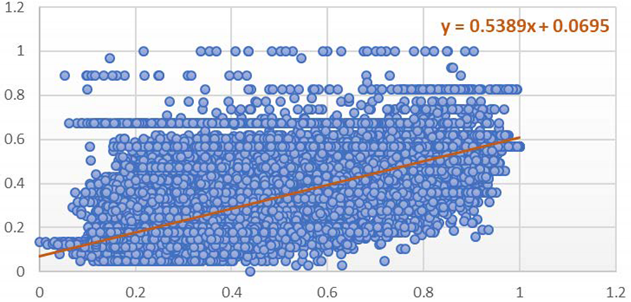 |  |
| Y = 0.5389x + 0.0695 | Y = 0.7997x − 0.2029 |
| x-axis: NDVI–y-axis: evapotranspiration | x-axis: 100-CN–y-axis: carbon storage |
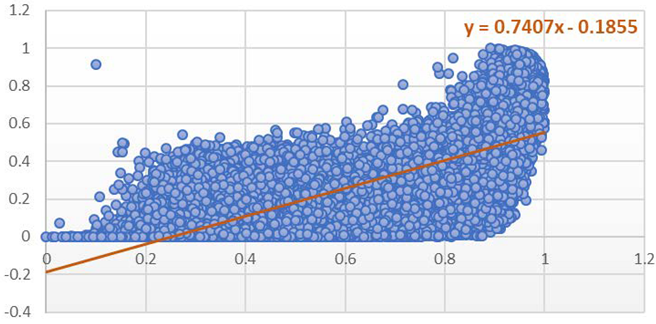 | 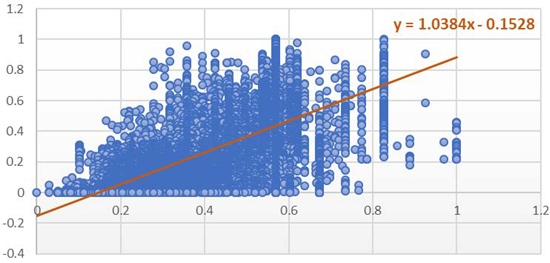 |
| Y = 0.7407x − 0.1855 | Y = 1.0384x − 0.1528 |
| x-axis: 100-CN–y-axis: evapotranspiration | x-axis: Carbon Storage–y-axis: evapotranspiration |
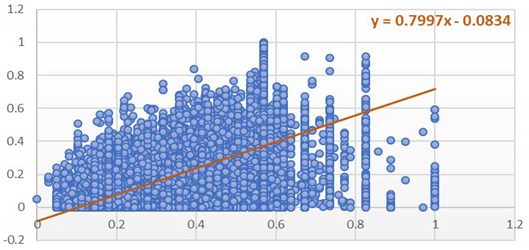 | 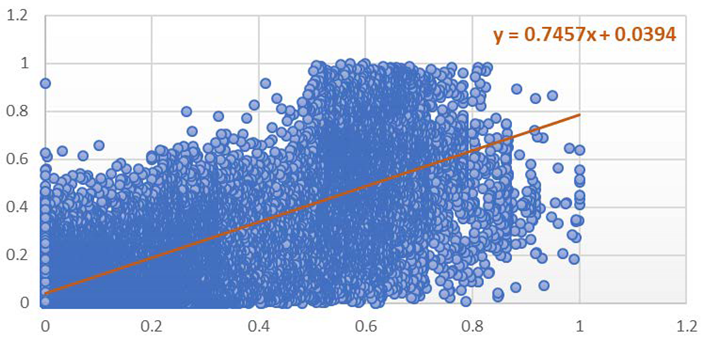 |
| Y = 0.7997x − 0.0834 | Y = 0.7457x + 0.0394 |
| x-axis: NDVI–y-axis: 100-CN | x-axis: NDVI–y-axis: carbon storage |
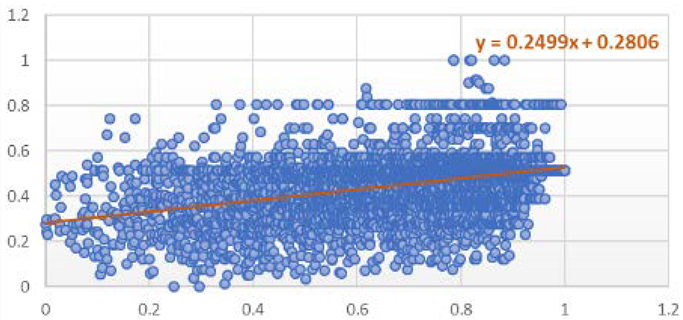 | 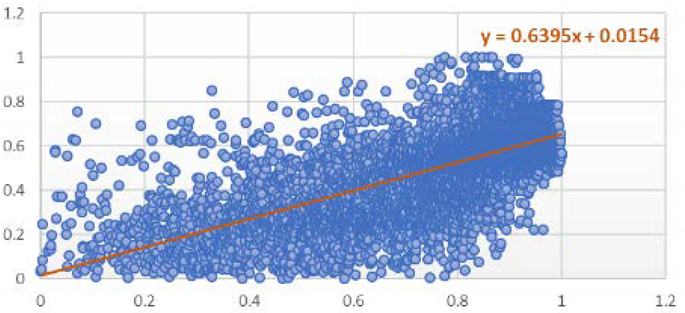 |
| Y = 0.2499x + 0.2806 | Y = 0.6395x + 0.0154 |
| x-axis: NDVI–y-axis: evapotranspiration | x-axis: 100-CN–y-axis: carbon storage |
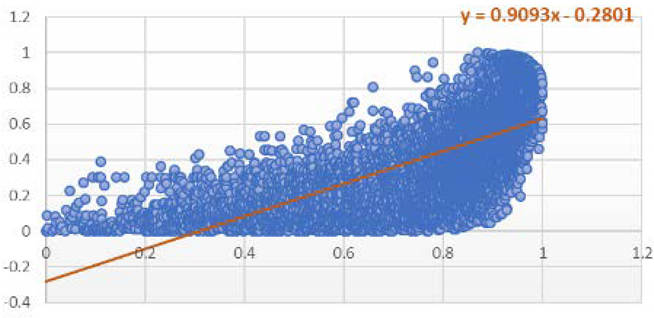 | 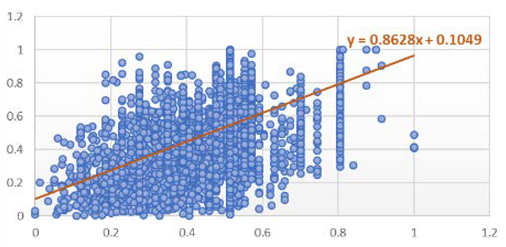 |
| Y = 0.9093x − 0.2801 | Y = 0.8628x + 0.1049 |
| x-axis: 100-CN–y-axis: evapotranspiration | x-axis: Carbon Storage–y-axis: evapotranspiration |
 | 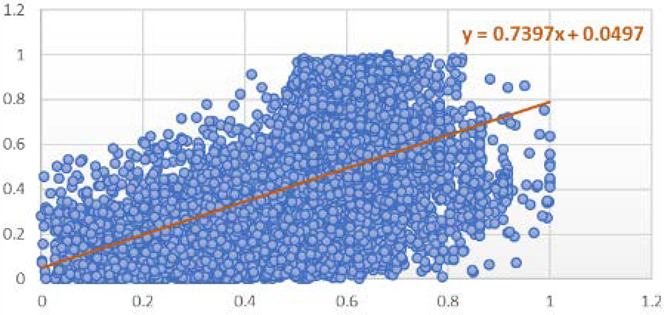 |
| Y = 0.8389x + 0.0318 | Y = 0.7397x + 0.0497 |
| x-axis: NDVI–y-axis: 100-CN | x-axis: NDVI–y-axis: carbon storage |
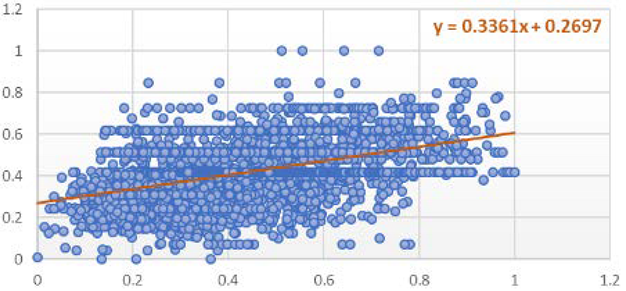 | 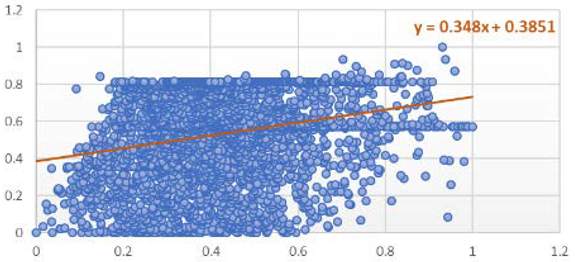 |
| Y = 0.3361x + 0.2697 | Y = 0.348x + 0.3851 |
| x-axis: NDVI–y-axis: evapotranspiration | x-axis: 100-CN–y-axis: carbon storage |
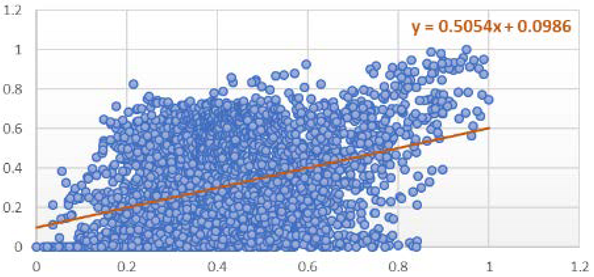 |  |
| Y = 0.5054x + 0.0986 | Y = 0.6277x + 0.2748 |
| x-axis: 100-CN–y-axis: evapotranspiration | x-axis: Carbon Storage–y-axis: evapotranspiration |
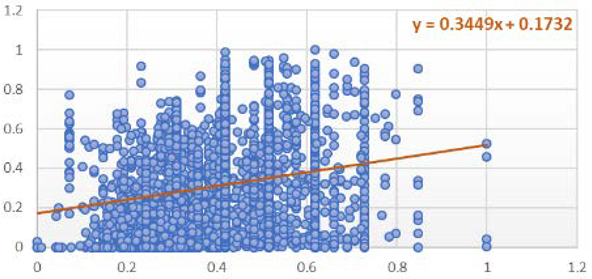 | 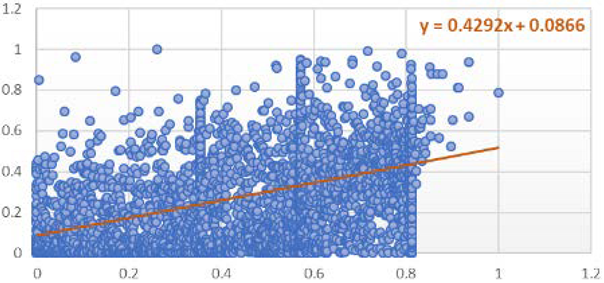 |
| Y = 0.3449x + 0.1732 | Y = 0.4292x + 0.0866 |
| x-axis: NDVI–y-axis: 100-CN | x-axis: NDVI–y-axis: carbon storage |
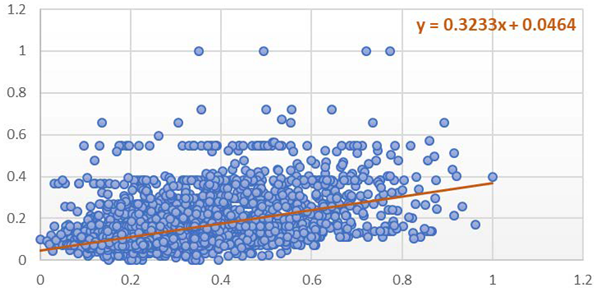 | 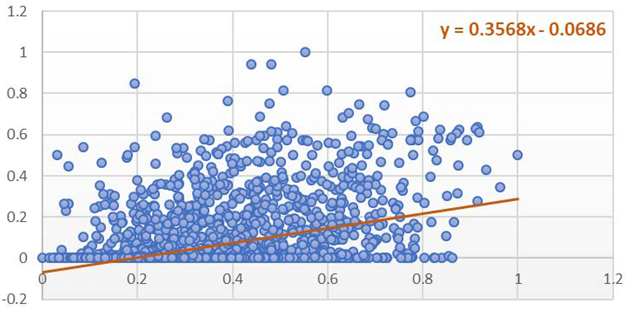 |
| Y = 0.3233x + 0.0464 | Y = 0.3568x − 0.0686 |
| x-axis: NDVI–y-axis: evapotranspiration | x-axis: 100-CN–y-axis: carbon storage |
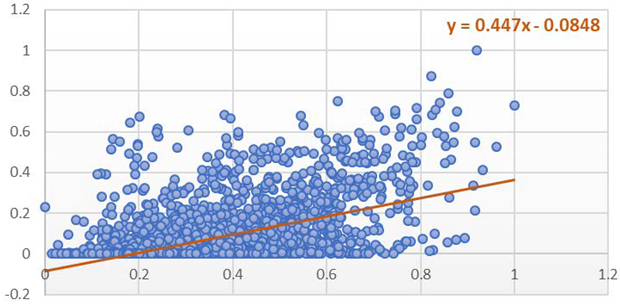 | 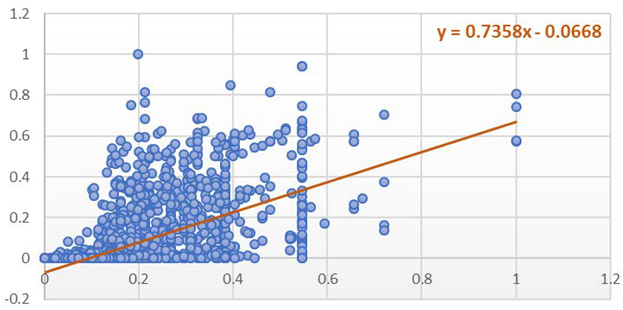 |
| Y = 0.447x − 0.0848 | Y = 0.7358x − 0.0668 |
| x-axis: 100-CN–y-axis: evapotranspiration | x-axis: Carbon Storage–y-axis: evapotranspiration |
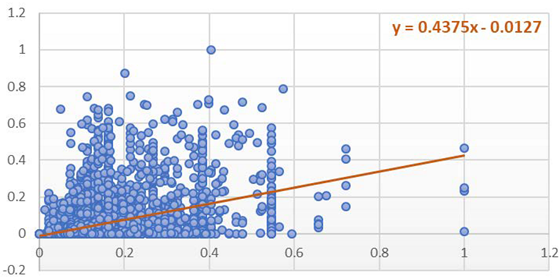 | 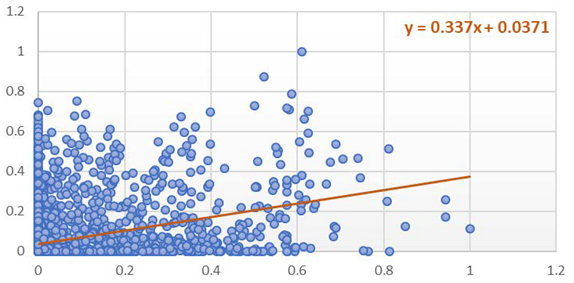 |
| Y = 0.4375x − 0.0127 | Y = 0.337x + 0.0371 |
| x-axis: NDVI–y-axis: 100-CN | x-axis: NDVI–y-axis: carbon storage |
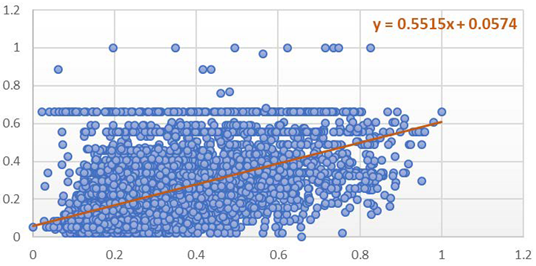 | 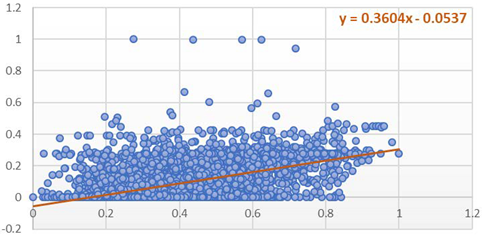 |
| Y = 0.5515x + 0.0574 | Y = 0.3604x − 0.0537 |
| x-axis: NDVI–y-axis: evapotranspiration | x-axis: 100-CN–y-axis: carbon storage |
 | 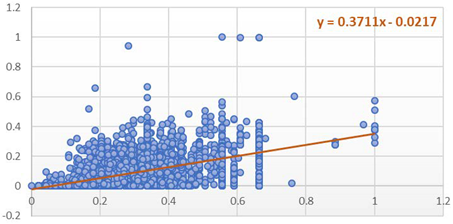 |
| Y = 0.3983x − 0.0788 | Y = 0.3711x − 0.0217 |
| x-axis: 100-CN–y-axis: evapotranspiration | x-axis: Carbon Storage–y-axis: evapotranspiration |
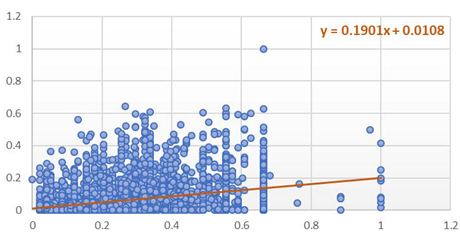 | 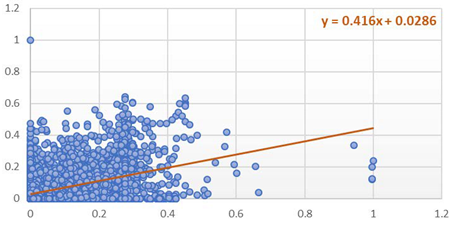 |
| Y = 0.1901x − 0.0108 | Y = 0.416x + 0.0286 |
| x-axis: NDVI–y-axis: 100-CN | x-axis: NDVI–y-axis: carbon storage |
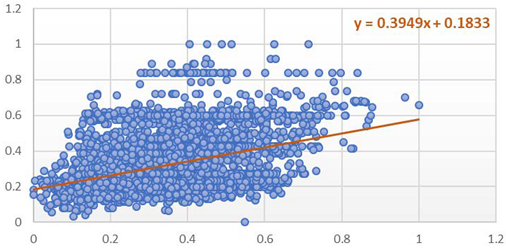 | 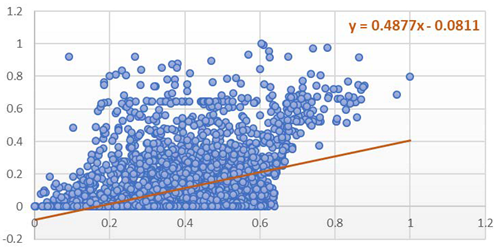 |
| Y = 0.3949x + 0.1833 | Y = 0.4877x − 0.0811 |
| x-axis: NDVI–y-axis: evapotranspiration | x-axis: 100-CN–y-axis: carbon storage |
 | 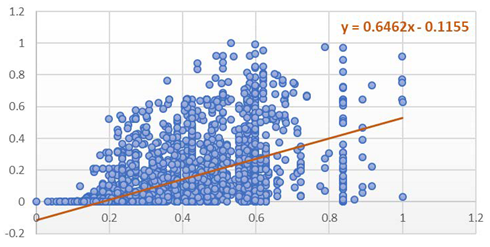 |
| Y = 0.6662x − 0.0359 | Y = 0.6462x − 0.1155 |
| x-axis: 100-CN–y-axis: evapotranspiration | x-axis: Carbon Storage–y-axis: evapotranspiration |
 | 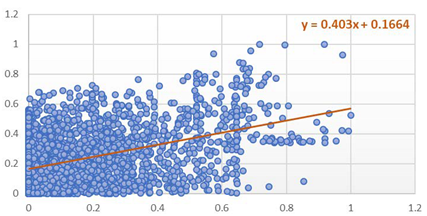 |
| Y = 0.3362x − 0.0951 | Y = 0.403x + 0.1664 |
| x-axis: NDVI–y-axis: 100-CN | x-axis: NDVI–y-axis: carbon storage |
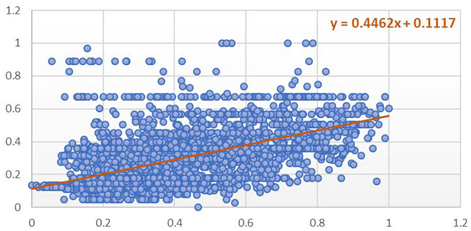 | 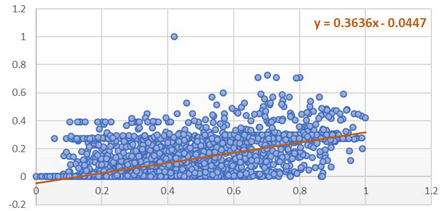 |
| Y = 0.4462x + 0.1117 | Y = 0.3636x − 0.0447 |
| x-axis: NDVI–y-axis: evapotranspiration | x-axis: 100-CN–y-axis: carbon storage |
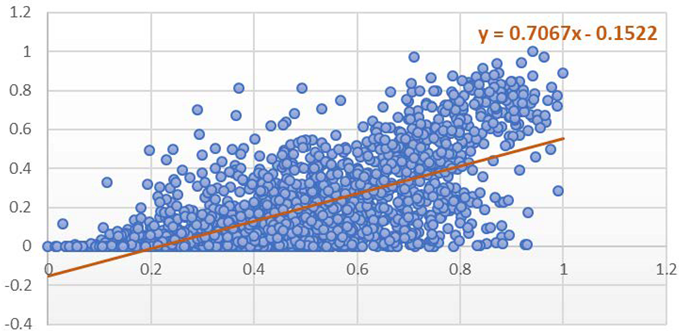 | 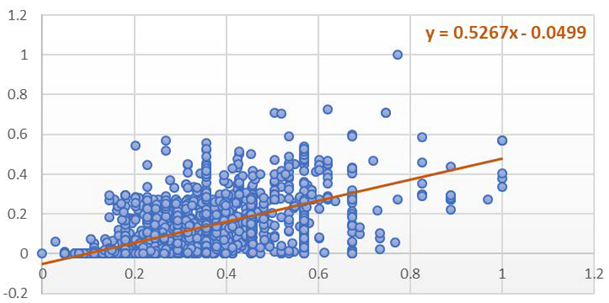 |
| Y = 0.7067x − 0.1522 | Y = 0.5267x − 0.0499 |
| x-axis: 100-CN–y-axis: evapotranspiration | x-axis: Carbon Storage–y-axis: evapotranspiration |
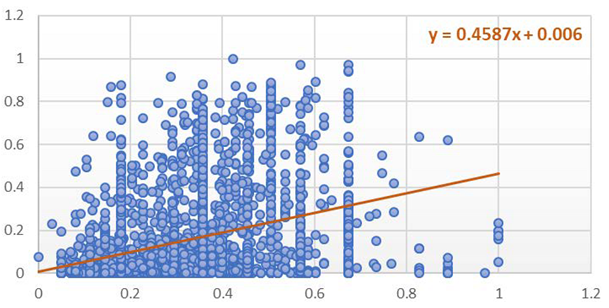 | 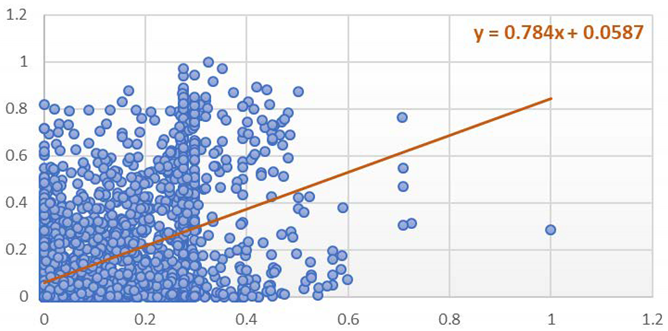 |
| Y = 0.4587x + 0.006 | Y = 0.784x + 0.0587 |
References
- Starfinger, U.; Sukopp, H. Assessment of Urban Biotopes for Nature Conservation; Elsevier: Amsterdam, The Netherlands, 1994; pp. 89–115. [Google Scholar]
- Corvalan, C.; Hales, S.; McMichael, A.; Butler, C.; Campbell-Lendrum, D.; Confalonieri, U.; Leitner, K.; Lewis, N.; Patz, J.; Polson, K.; et al. Ecosystems and Human Well-Being: Health Synthesis; WHO: Geneva, Switzerland, 2005. [Google Scholar]
- Costanza, R.; D’Arge, R.; De Groot, R.; Farber, S.; Grasso, M.; Hannon, B.; Limburg, K.; Naeem, S.; O’Neill, R.V.; Paruelo, J.M.; et al. The value of the world’s ecosystem services and natural capital. Nature 1997, 387, 253–260. [Google Scholar] [CrossRef]
- Daily, G.; Postel, S.; Bawa, K.; Kaufman, L. Nature’s Services: Societal Dependence on Natural Ecosystems; Bibliovault OAI Repository, the University of Chicago Press: Chicago, IL, USA, 1997. [Google Scholar]
- Cortinovis, C.; Geneletti, D. A framework to explore the effects of urban planning decisions on regulating ecosystem services in cities. Ecosyst. Serv. 2019, 38, 100946. [Google Scholar] [CrossRef]
- Holt, A.R.; Mears, M.; Maltby, L.; Warren, P. Understanding spatial patterns in the production of multiple urban ecosystem services. Ecosyst. Serv. 2015, 16, 33–46. [Google Scholar] [CrossRef] [Green Version]
- Derkzen, M.L.; van Teeffelen, A.; Verburg, P. REVIEW: Quantifying urban ecosystem services based on high-resolution data of urban green space: An assessment for Rotterdam, the Netherlands. J. Appl. Ecol. 2015, 52, 1020–1032. [Google Scholar] [CrossRef]
- Spake, R.; Lasseur, R.; Crouzat, E.; Bullock, J.M.; Lavorel, S.; Parks, K.E.; Schaafsma, M.; Bennett, E.M.; Maes, J.; Mulligan, M.; et al. Unpacking ecosystem service bundles: Towards predictive mapping of synergies and trade-offs between ecosystem services. Glob. Environ. Chang. 2017, 47, 37–50. [Google Scholar] [CrossRef] [Green Version]
- Zhang, Z.; Liu, Y.; Wang, Y.; Liu, Y.; Zhang, Y.; Zhang, Y. What factors affect the synergy and tradeoff between ecosystem services, and how, from a geospatial perspective? J. Clean. Prod. 2020, 257, 120454. [Google Scholar] [CrossRef]
- Gordon, A.; Simondson, D.; White, M.; Moilanen, A.; Bekessy, S.A. Integrating conservation planning and landuse planning in urban landscapes. Landsc. Urban Plan. 2009, 91, 183–194. [Google Scholar] [CrossRef]
- McShane, T.O.; Hirsch, P.D.; Trung, T.C.; Songorwa, A.; Kinzig, A.; Monteferri, B.; Mutekanga, D.; Van Thang, H.; Dammert, J.L.; Pulgar-Vidal, M.; et al. Hard choices: Making trade-offs between biodiversity conservation and human well-being. Biol. Conserv. 2011, 144, 966–972. [Google Scholar] [CrossRef]
- Rodríguez, J.P.; Beard, J.T.D.; Bennett, E.M.; Cumming, G.; Cork, S.J.; Agard, J.; Dobson, A.P.; Peterson, G. Trade-offs across Space, Time, and Ecosystem Services. Ecol. Soc. 2006, 11. [Google Scholar] [CrossRef] [Green Version]
- Haase, D.; Schwarz, N.; Strohbach, M.; Kroll, F.; Seppelt, R. Synergies, Trade-offs, and Losses of Ecosystem Services in Urban Regions: An Integrated Multiscale Framework Applied to the Leipzig-Halle Region, Germany. Ecol. Soc. 2012, 17, 22. [Google Scholar] [CrossRef]
- Jia, X.; Fu, B.; Feng, X.; Hou, G.; Liu, Y.; Wang, X. The tradeoff and synergy between ecosystem services in the Grain-for-Green areas in Northern Shaanxi, China. Ecol. Indic. 2014, 43, 103–113. [Google Scholar] [CrossRef]
- Qin, K.; Lin, Y.-P.; Yang, X. Trade-Off and Synergy among Ecosystem Services in the Guanzhong-Tianshui Economic Region of China. Int. J. Environ. Res. Public Health 2015, 12, 14094–14113. [Google Scholar] [CrossRef]
- Turkelboom, F.; Thoonen, M.; Jacobs, S.; Garcia Llorente, M.; Martín-López, B.; Berry, P. Ecosystem Services Trade-Offs and Synergies; OpenNESS: Helsinki, Finland, 2016. [Google Scholar] [CrossRef]
- Hao, R.; Yu, D.; Wu, J. Relationship between paired ecosystem services in the grassland and agro-pastoral transitional zone of China using the constraint line method. Agric. Ecosyst. Environ. 2017, 240, 171–181. [Google Scholar] [CrossRef]
- Lin, S.; Wu, R.; Yang, F.; Wang, J.; Wu, W. Spatial trade-offs and synergies among ecosystem services within a global biodiversity hotspot. Ecol. Indic. 2018, 84, 371–381. [Google Scholar] [CrossRef]
- Tallis, H.; Kareiva, P.; Marvier, M.; Chang, A. An ecosystem services framework to support both practical conservation and economic development. Proc. Natl. Acad. Sci. USA 2008, 105, 9457–9464. [Google Scholar] [CrossRef] [PubMed] [Green Version]
- Oh, K.; Lee, D.; Park, C. Urban Ecological Network Planning for Sustainable Landscape Management. J. Urban Technol. 2011, 18, 39–59. [Google Scholar] [CrossRef]
- Lee, D.; Oh, K. The Green Infrastructure Assessment System (GIAS) and Its Applications for Urban Development and Management. Sustainability 2019, 11, 3798. [Google Scholar] [CrossRef] [Green Version]
- Armson, D.; Stringer, P.; Ennos, A. The effect of street trees and amenity grass on urban surface water runoff in Manchester, UK. Urban For. Urban Green. 2013, 12, 282–286. [Google Scholar] [CrossRef]
- Zhang, B.; Xie, G.-D.; Li, N.; Wang, S. Effect of urban green space changes on the role of rainwater runoff reduction in Beijing, China. Landsc. Urban Plan. 2015, 140, 8–16. [Google Scholar] [CrossRef]
- Frank, B.; Delano, D.; Caniglia, B.S. Urban systems: A socio-ecological system perspective. Sociol. Int. J. 2017, 1, 1–8. [Google Scholar] [CrossRef] [Green Version]
- Grimm, N.B.; Redman, C.L.; Boone, C.G.; Childers, D.L.; Harlan, S.L.; Turner, B.L. Viewing the urban socio-ecological system through a sustainability lens: Lessons and prospects from the central Arizona–Phoenix LTER programme. In Long Term Socio-Ecological Research; Springer: Berlin/Heidelberg, Germany, 2013; pp. 217–246. [Google Scholar] [CrossRef]
- Felipe-Lucia, M.R.; Comín, F.A.; Escalera-Reyes, J. A framework for the social valuation of ecosystem services. AMBIO 2014, 44, 308–318. [Google Scholar] [CrossRef] [Green Version]
- Raudsepp-Hearne, C.; Peterson, G.; Bennett, E.M. Ecosystem service bundles for analyzing tradeoffs in diverse landscapes. Proc. Natl. Acad. Sci. USA 2010, 107, 5242–5247. [Google Scholar] [CrossRef] [Green Version]
- Davies, Z.G.; Edmondson, J.L.; Heinemeyer, A.; Leake, J.R.; Gaston, K.J. Mapping an urban ecosystem service: Quantifying above-ground carbon storage at a city-wide scale. J. Appl. Ecol. 2011, 48, 1125–1134. [Google Scholar] [CrossRef] [Green Version]
- White, C.; Halpern, B.S.; Kappel, C.V. Ecosystem service tradeoff analysis reveals the value of marine spatial planning for multiple ocean uses. Proc. Natl. Acad. Sci. USA 2012, 109, 4696–4701. [Google Scholar] [CrossRef] [Green Version]
- Gómez-Baggethun, E.; Barton, D.N. Classifying and valuing ecosystem services for urban planning. Ecol. Econ. 2012, 86, 235–245. [Google Scholar] [CrossRef]
- Chan, K.M.A.; Satterfield, T. Managing Cultural Ecosystem Services for Sustainability; Routledge: London, UK, 2016; pp. 343–358. [Google Scholar] [CrossRef] [Green Version]
- Korea Ministry of Environment (KME). Basic Plan for Conservation of the Natural Environment; Korea Ministry of Environment (KME): Sejong, Korea, 2015. [Google Scholar]
- TEEB. The Economics of Ecosystem and Biodiversity, Mainstreaming the Economics of Nature: A Synthesis of the Approach, Conclusions and Recommendations of TEEB; UNEP: Ginebra, Switzerland, 2012. [Google Scholar]
- Song, I.; Yoon, C. Establishment and Utilization of Ecosystem Service Assessment in Seoul; Seoul Institute: Seoul, Korea, 2019; Volume 2019. [Google Scholar]
- Crookes, D.; Blignaut, J.; de Wit, M.; Esler, K.; Le Maitre, D.; Milton, S.; Mitchell, S.; Cloete, J.; de Abreu, P.; Vlok, H.F.; et al. System dynamic modelling to assess economic viability and risk trade-offs for ecological restoration in South Africa. J. Environ. Manag. 2013, 120, 138–147. [Google Scholar] [CrossRef] [PubMed] [Green Version]
- Lauf, S.; Haase, D.; Kleinschmit, B. Linkages between ecosystem services provisioning, urban growth and shrinkage—A modeling approach assessing ecosystem service trade-offs. Ecol. Indic. 2014, 42, 73–94. [Google Scholar] [CrossRef]
- Balbi, S.; del Prado, A.; Gallejones, P.; Geevan, C.P.; Pardo, G.; Pérez-Miñana, E.; Manrique, R.; Hernandez-Santiago, C.; Villa, F. Modeling trade-offs among ecosystem services in agricultural production systems. Environ. Model. Softw. 2015, 72, 314–326. [Google Scholar] [CrossRef] [Green Version]
- Lee, H.; Lautenbach, S. A quantitative review of relationships between ecosystem services. Ecol. Indic. 2016, 66, 340–351. [Google Scholar] [CrossRef]
- Burkhard, B.; Kroll, F.; Nedkov, S.; Müller, F. Mapping ecosystem service supply, demand and budgets. Ecol. Indic. 2012, 21, 17–29. [Google Scholar] [CrossRef]
- Chen, W.; Chi, G.; Li, J. The spatial aspect of ecosystem services balance and its determinants. Land Use Policy 2019, 90, 104263. [Google Scholar] [CrossRef]
- Korea Ministry of Environment (KME). Urban Ecological Health Promotion Technology Development Project; Korea Ministry of Environment (KME): Sejong, Korea, 2018. [Google Scholar]
- Rouse, J.W.; Haas, R.H.; Schell, J.A.; Deering, D.W. Monitoring vegetation systems in the great plains with ERTS. In Proceedings of the 3rd ERTS-1 Symposium, Washington, DC, USA, 10–14 December 1974; pp. 309–317. [Google Scholar]
- Weier, J.; Herring, D. Measuring Vegetation (NDVI & EVI). 2014. Available online: http://earthobservatory.nasa.gov/Features/MeasuringVegetation (accessed on 1 June 2021).
- Rozario, P.; Oduor, P.; Kotchman, L.; Kangas, M. Transition Modeling of Land-Use Dynamics in the Pipestem Creek, North Dakota, USA. J. Geosci. Environ. Prot. 2017, 5, 182–201. [Google Scholar] [CrossRef]
- Pettorelli, N.; Vik, J.O.; Mysterud, A.; Gaillard, J.-M.; Tucker, C.J.; Stenseth, N.C. Using the satellite-derived NDVI to assess ecological responses to environmental change. Trends Ecol. Evol. 2005, 20, 503–510. [Google Scholar] [CrossRef]
- Muratet, A.; Lorrillière, R.; Clergeau, P.; Fontaine, C. Evaluation of landscape connectivity at community level using satellite-derived NDVI. Landsc. Ecol. 2012, 28, 95–105. [Google Scholar] [CrossRef]
- De Carvalho, R.M.; Szlafsztein, C.F. Urban vegetation loss and ecosystem services: The influence on climate regulation and noise and air pollution. Environ. Pollut. 2018, 245, 844–852. [Google Scholar] [CrossRef] [PubMed]
- Mirsanjari, M.M.; Zarandian, A.; Mohammadyari, F.; Visockiene, J.S. Investigation of the impacts of urban vegetation loss on the ecosystem service of air pollution mitigation in Karaj metropolis, Iran. Environ. Monit. Assess. 2020, 192, 1–23. [Google Scholar] [CrossRef] [PubMed]
- Weng, Q. Modeling Urban Growth Effects on Surface Runoff with the Integration of Remote Sensing and GIS. Environ. Manag. 2001, 28, 737–748. [Google Scholar] [CrossRef]
- Nedkov, S.; Boyanova, K.; Burkhard, K. Quantifying, Modelling and Mapping Ecosystem Services in Watersheds; Springer: Dordrecht, The Netherlands, 2015; pp. 133–149. [Google Scholar] [CrossRef]
- Liu, W.; Chen, W.; Peng, C. Influences of setting sizes and combination of green infrastructures on community’s stormwater runoff reduction. Ecol. Model. 2015, 318, 236–244. [Google Scholar] [CrossRef]
- Mockus, V. National Engineering Handbook; US Soil Conservation Service: Washington, DC, USA, 1964; p. 4. [Google Scholar]
- Korea Ministry of Environment (KME). Standard Guidelines for Estimating Flood Volumes; Korea Ministry of Environment (KME): Sejong, Korea, 2019. [Google Scholar]
- Whitford, V.; Ennos, A.R.; Handley, J.F. “City form and natural process” indicators for the ecological performance of urban areas and their application to Merseyside, UK. Landsc. Urban Plan. 2001, 57, 91–103. [Google Scholar] [CrossRef]
- Nowak, D.J.; Crane, D.E. Carbon storage and sequestration by urban trees in the USA. Environ. Pollut. 2001, 116, 381–389. [Google Scholar] [CrossRef]
- Eggleston, H.S.; Buendia, L.; Miwa, K.; Ngara, T.; Tanabe, K. 2006 IPCC Guidelines for National Greenhouse Gas Inventories; IPCC National Greenhouse Gas Inventories Programme: Hayama, Japan, 2006. [Google Scholar]
- Grimmond, S. Urbanization and global environmental change: Local effects of urban warming. Geogr. J. 2007, 173, 83–88. [Google Scholar] [CrossRef]
- Stewart, I.D.; Oke, T.R. Local Climate Zones for Urban Temperature Studies. Bull. Am. Meteorol. Soc. 2012, 93, 1879–1900. [Google Scholar] [CrossRef]
- Lee, D.; Oh, K. Classifying urban climate zones (UCZs) based on statistical analyses. Urban Clim. 2018, 24, 503–516. [Google Scholar] [CrossRef]
- Lee, D.; Oh, K.; Jung, S. Classifying Urban Climate Zones (UCZs) Based on Spatial Statistical Analyses. Sustainability 2019, 11, 1915. [Google Scholar] [CrossRef] [Green Version]
- Larondelle, N.; Lauf, S. Balancing demand and supply of multiple urban ecosystem services on different spatial scales. Ecosyst. Serv. 2016, 22, 18–31. [Google Scholar] [CrossRef]
- Park, J.; Kim, J.-H.; Lee, D.K.; Park, C.Y.; Jeong, S.G. The influence of small green space type and structure at the street level on urban heat island mitigation. Urban For. Urban Green. 2017, 21, 203–212. [Google Scholar] [CrossRef]
- Lee, D.; Oh, K. Developing the Urban Thermal Environment Management and Planning (UTEMP) System to Support Urban Planning and Design. Sustainability 2019, 11, 2224. [Google Scholar] [CrossRef] [Green Version]
- Park, E.; Kang, K. Estimation of C Storage and Annual CO2 Uptake by Street Trees in Gyeonggi-do. Korean J. Environ. Ecol. 2010, 24, 591–600. [Google Scholar]
- Korea Forest Service. Carbon Emission Factors and Biomass Allometric Equations by Species in Korea; Korea Forest Service: Daejeon, Korea, 2006. [Google Scholar]
- Irmak, A. Evapotranspiration—Remote Sensing and Modeling; INTECH Open Access Publisher: London, UK, 2011. [Google Scholar]
- Saaty, T.L. Decision-making with the AHP: Why is the principal eigenvector necessary. Eur. J. Oper. Res. 2003, 145, 85–91. [Google Scholar] [CrossRef]
- Saaty, T.L. Decision making for leaders. IEEE Trans. Syst. Man Cybern. 1985, SMC-15, 450–452. [Google Scholar] [CrossRef]
- Oh, K.; Jeong, Y. The Usefulness of the GIS—Fuzzy Set Approach in Evaluating the Urban Residential Environment. Environ. Plan. B Plan. Des. 2002, 29, 589–606. [Google Scholar] [CrossRef] [Green Version]
- Kim, H.; Oh, K.; Lee, D. Establishment of a Geographic Information System-Based Algorithm to Analyze Suitable Locations for Green Roofs and Roadside Trees. Appl. Sci. 2021, 11, 7368. [Google Scholar] [CrossRef]
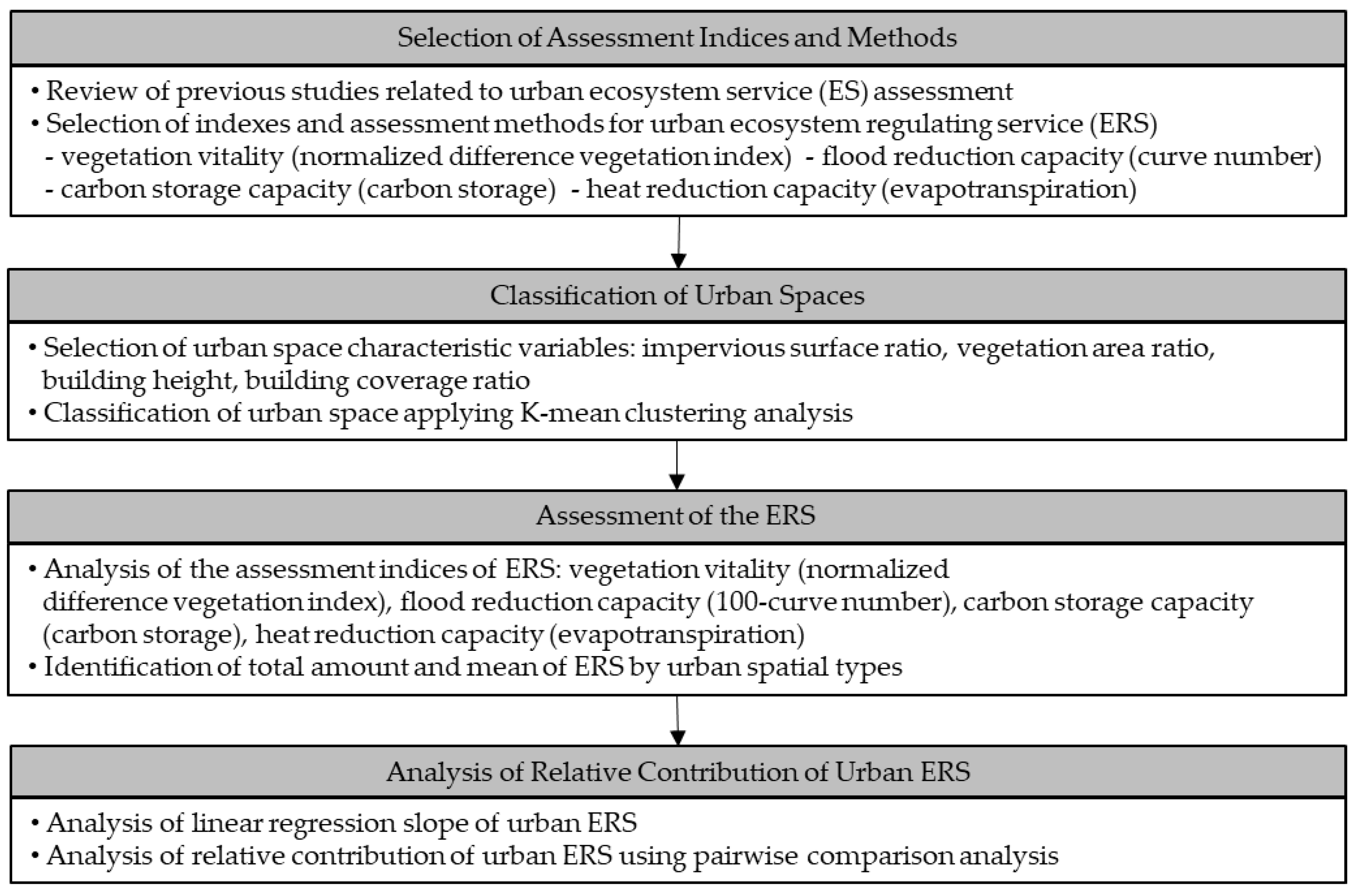
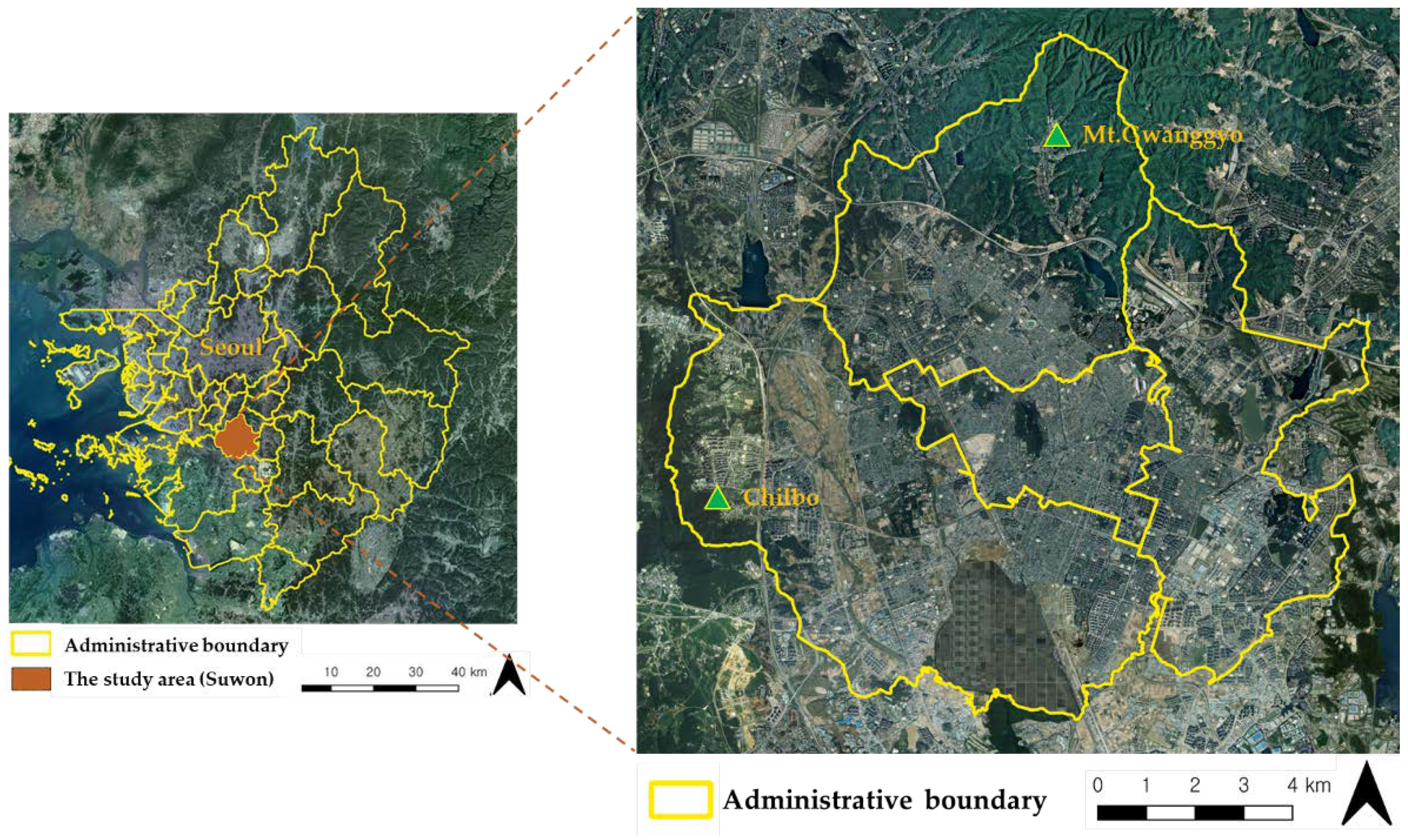

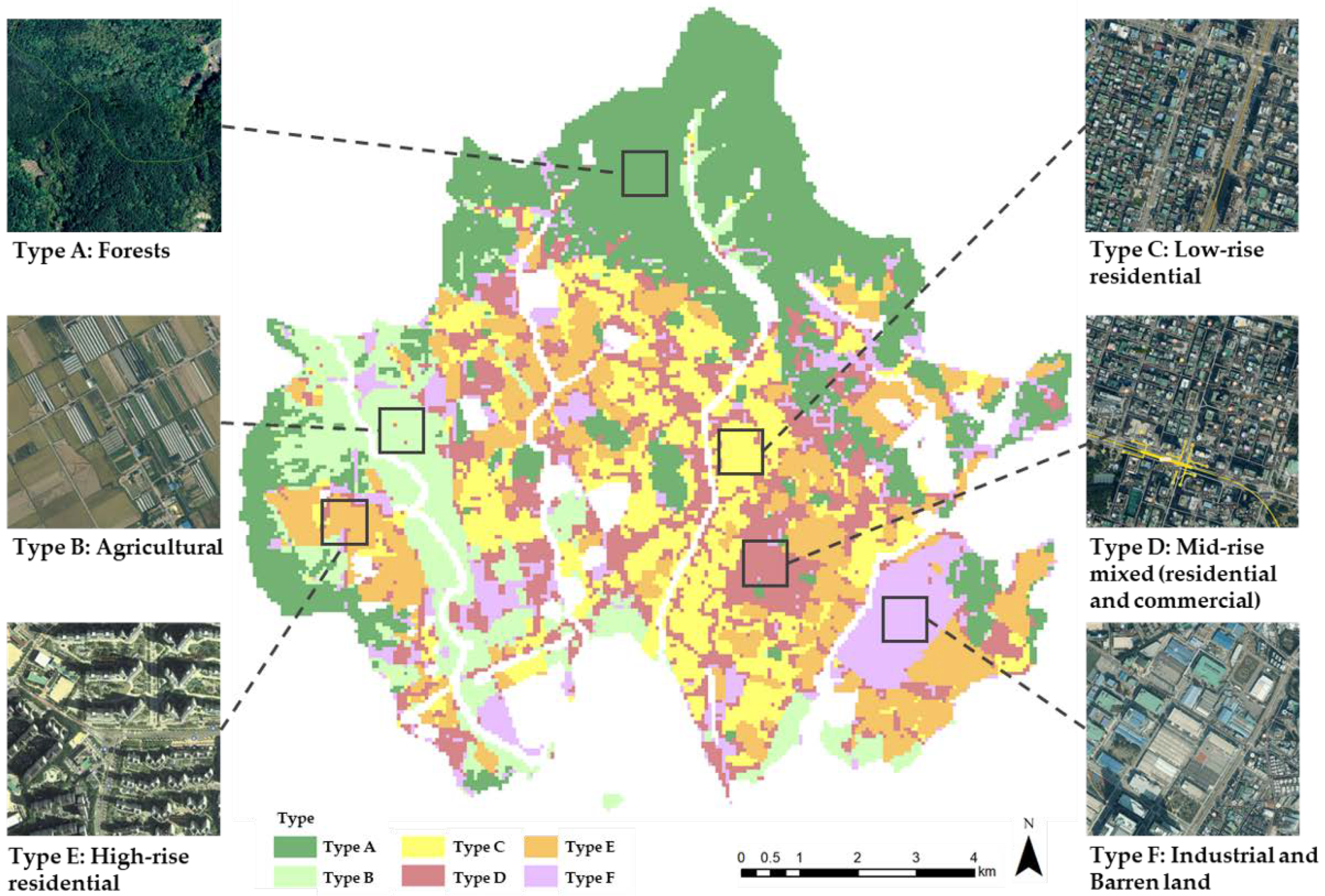
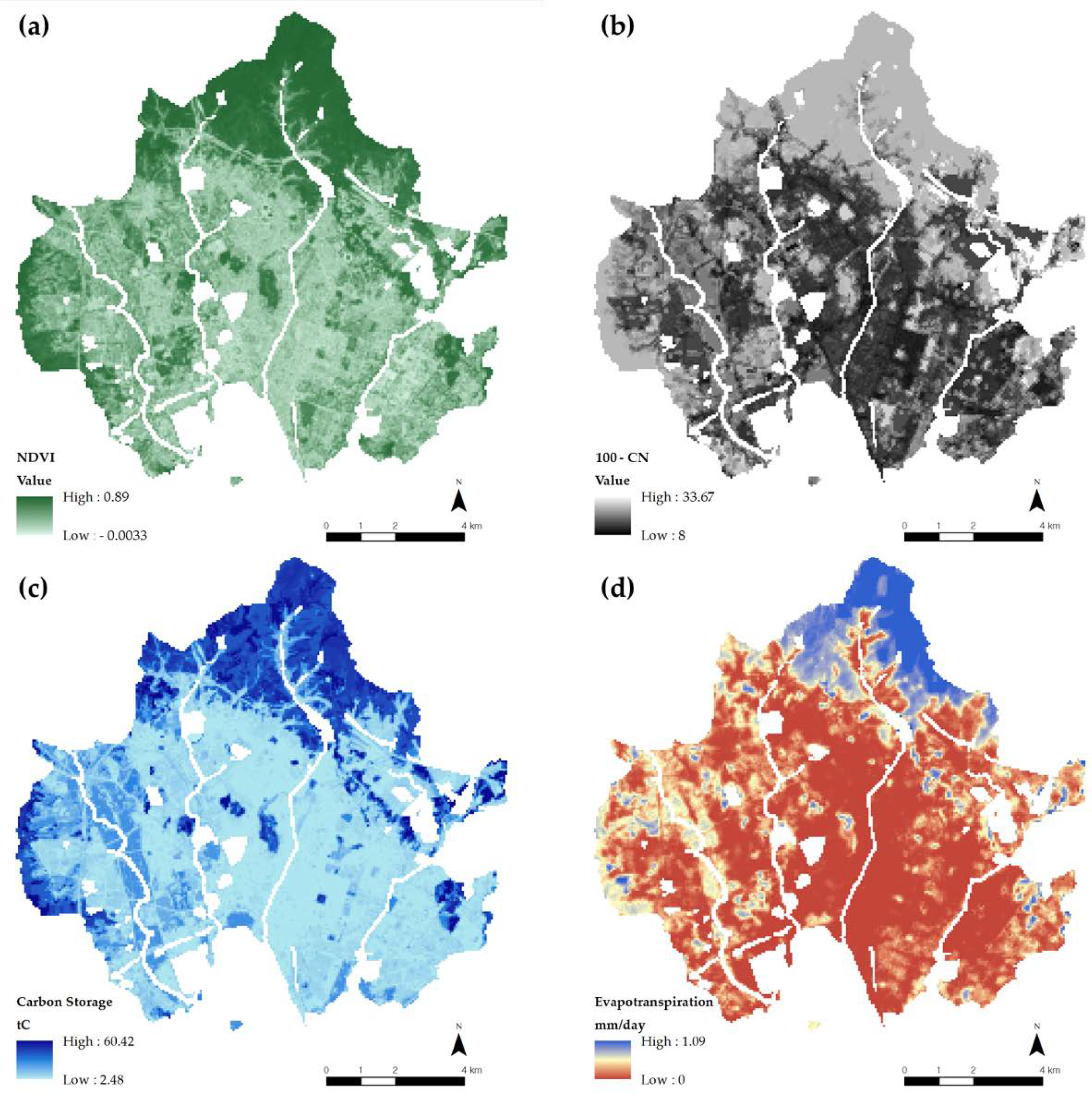
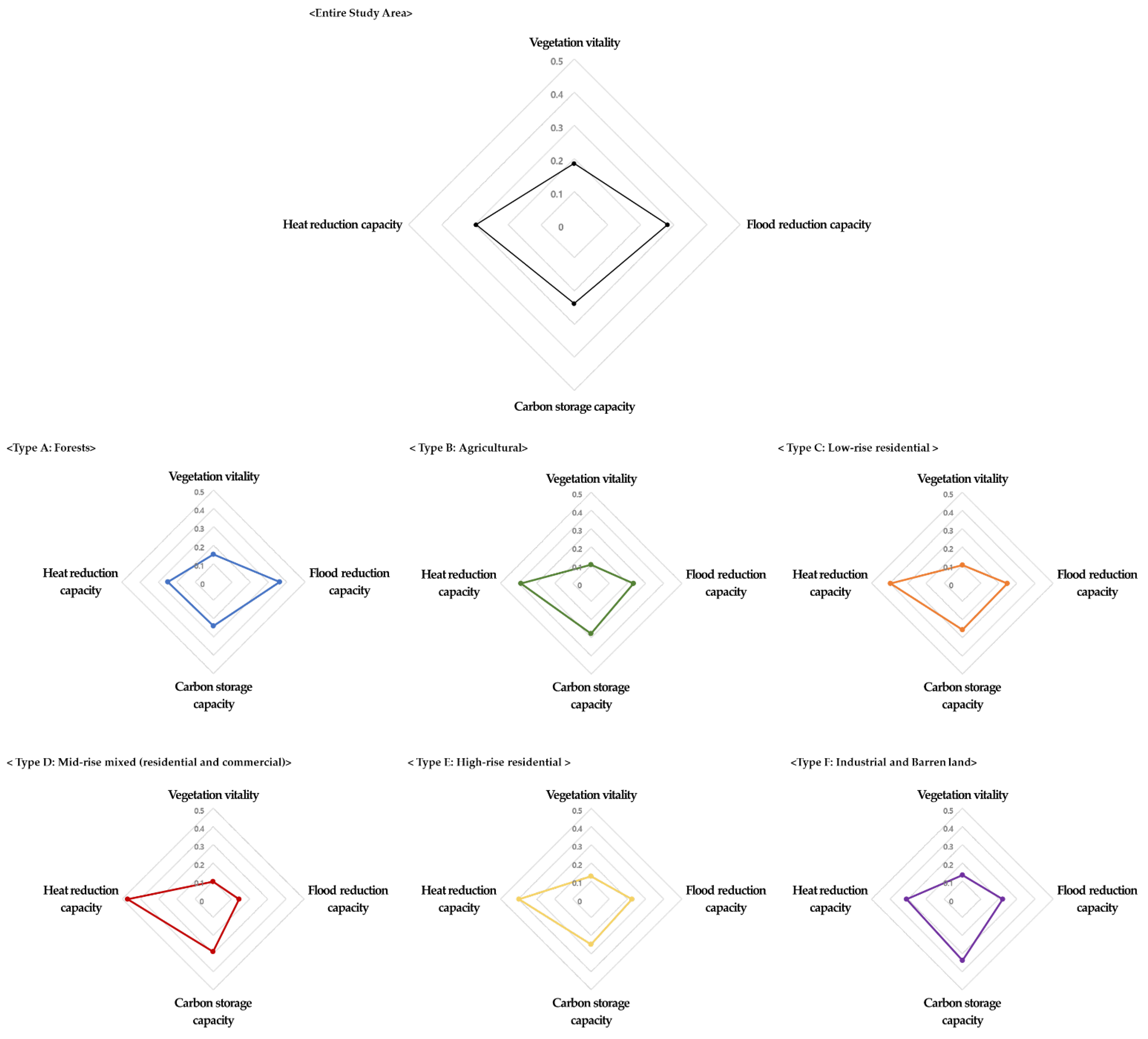
| Assessment Indices | Definitions | Analytic Methods | References | ||
|---|---|---|---|---|---|
| vegetation vitality | distribution and vitality of vegetation | NDVI = (NIR − RED)/(NIR + RED) NIR = near infrared Landsat image RED = visible red Landsat image | calculation by using Landsat 8 TM band 4 (NIR), band 5 (RED) | Rouse et al. [42] Weier and Herring [43] Rozario et al. [44] | |
| flood reduction capacity | empirical parameter used in hydrology for predicting direct runoff | curve number by land cover | Korean curve number by land cover | Korea Ministry of Environment [53] | |
| carbon storage capacity | vegetation carbon storage | carbon storage using biomass of urban trees | vegetation carbon storage = CF Xi Wi Wi = a(DBH)b Xi = vegetation area number of trees | CF: carbon fraction 0.5 Wi: biomass of trees Xi: number of trees DBH: diameter at breast height a. b: biomass allometric equations (broad-leaved tree a: 0.1403, b: 2.4595/conifer a: 0.1915, b: 2.1436) | Eggleston et al. [56] Park and Kang [64] |
| soil carbon storage | carbon storage in urban soil | soil carbon storage = area soil carbon/ha | forest: 69.7 tC/ha paddy: 60.6 tC/ha crop: 45.9 tC/ha etc: 11.5 tC/ha (urbanized areas) | Korea Forest Service [65] | |
| heat reduction capacity | sum of evaporation from land surface plus transpiration from plants. | measurement of evaporation using Landsat 8 TM | EEFlux (Earth Engine Evapotranspiration Flux) | Irmak [66] | |
| Type A (n = 8378) | Type B (n = 3525) | Type C (n = 4530) | Type D (n = 4545) | Type E (n = 4493) | Type F (n = 2677) | |
|---|---|---|---|---|---|---|
| impervious surface ratio (%) | 9.43 | 27.87 | 86.9 | 72.25 | 70.12 | 63.99 |
| vegetation area ratio (%) | 43.99 | 0.88 | 0.75 | 2.19 | 2.91 | 2.99 |
| building height (m) | 0.92 | 1.58 | 5.64 | 6.55 | 17.19 | 3.58 |
| building coverage ratio (%) | 1.38 | 3.37 | 32.28 | 20.15 | 14.11 | 14.17 |
| Vegetation Vitality (NDVI) | Flood Reduction Capacity (100-CN) | Carbon Storage Capacity (Carbon Storage (tC)) | Heat Reduction Capacity (Evapotranspiration (mm/day)) | |
|---|---|---|---|---|
| min | −0.0032 | 8 | 2.48 | 0.00 |
| max | 0.88 | 33.67 | 60.42 | 1.09 |
| mean | 0.45 | 20.38 | 15.17 | 0.21 |
| Entire Study Area (n = 28,148) | Type A (n = 8378) | Type B (n = 3525) | Type C (n = 4530) | Type D (n = 4545) | Type E (n = 4493) | Type F (n = 2677) | ||
|---|---|---|---|---|---|---|---|---|
| vegetation vitality (NDVI) | amount | 12,571.80 | 6032.50 | 1420.10 | 1200.20 | 1382.80 | 1617.00 | 919.20 |
| mean | 0.45 | 0.72 | 0.40 | 0.26 | 0.30 | 0.36 | 0.34 | |
| flood reduction capacity (100-CN) | amount | 573,656.24 | 218,565.20 | 69,231.00 | 72072.30 | 80,219.25 | 83,749.52 | 49,818.97 |
| mean | 20.38 | 26.10 | 19.64 | 15.91 | 17.65 | 18.64 | 18.61 | |
| carbon storage capacity (carbon storage (tC)) | amount | 426,963.5 | 272,008.8 | 51,257.2 | 23,031.7 | 28,802.1 | 29,684.4 | 22,179.3 |
| mean | 15.17 | 32.47 | 14.54 | 5.08 | 6.34 | 6.61 | 8.28 | |
| heat reduction capacity (evapotranspiration (mm/day)) | amount | 5859.50 | 3904.30 | 795.50 | 100.40 | 259.80 | 529.40 | 270.10 |
| mean | 0.21 | 0.47 | 0.23 | 0.02 | 0.06 | 0.12 | 0.11 | |
| Entire Study Area (n = 28,148) | Type A (n = 8378) | Type B (n = 3525) | Type C (n = 4530) | Type D (n = 4545) | Type E (n = 4493) | Type F (n = 2677) | |
|---|---|---|---|---|---|---|---|
| vegetation vitality (NDVI) | 0.1847 | 0.1504 | 0.1031 | 0.0995 | 0.0973 | 0.1273 | 0.1321 |
| flood reduction capacity (100-CN) | 0.2815 | 0.3602 | 0.2329 | 0.2463 | 0.1421 | 0.2255 | 0.2219 |
| carbon storage capacity (carbon storage) | 0.2374 | 0.2398 | 0.2776 | 0.2572 | 0.29 | 0.2498 | 0.3377 |
| heat reduction capacity (evapotranspiration) | 0.2964 | 0.2496 | 0.3864 | 0.3971 | 0.4706 | 0.3974 | 0.3082 |
| standard deviation | 0.0435 | 0.0744 | 0.1015 | 0.1053 | 0.1460 | 0.0967 | 0.0803 |
Publisher’s Note: MDPI stays neutral with regard to jurisdictional claims in published maps and institutional affiliations. |
© 2021 by the authors. Licensee MDPI, Basel, Switzerland. This article is an open access article distributed under the terms and conditions of the Creative Commons Attribution (CC BY) license (https://creativecommons.org/licenses/by/4.0/).
Share and Cite
Kim, H.; Oh, K.; Lee, D. The Contribution of Ecosystem Regulating Services Based on Their Interrelationship in the Urban Ecosystem. Appl. Sci. 2021, 11, 9610. https://doi.org/10.3390/app11209610
Kim H, Oh K, Lee D. The Contribution of Ecosystem Regulating Services Based on Their Interrelationship in the Urban Ecosystem. Applied Sciences. 2021; 11(20):9610. https://doi.org/10.3390/app11209610
Chicago/Turabian StyleKim, Hyunsu, Kyushik Oh, and Dongwoo Lee. 2021. "The Contribution of Ecosystem Regulating Services Based on Their Interrelationship in the Urban Ecosystem" Applied Sciences 11, no. 20: 9610. https://doi.org/10.3390/app11209610
APA StyleKim, H., Oh, K., & Lee, D. (2021). The Contribution of Ecosystem Regulating Services Based on Their Interrelationship in the Urban Ecosystem. Applied Sciences, 11(20), 9610. https://doi.org/10.3390/app11209610





